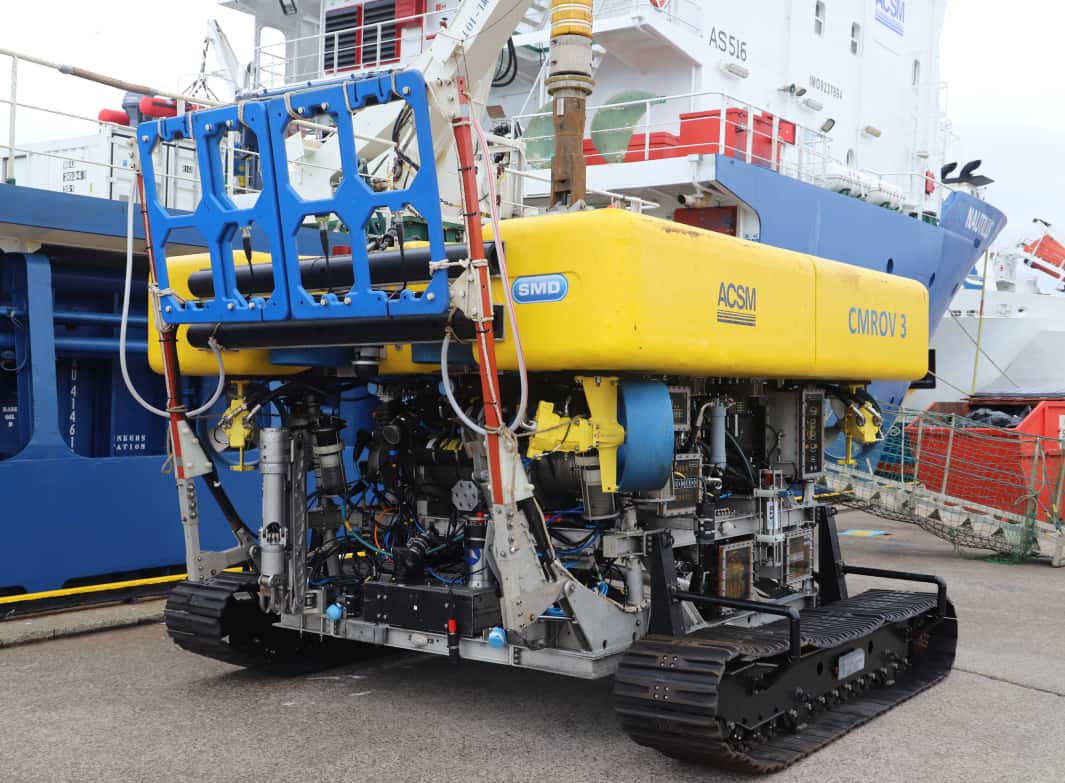UXO detection survey along cable route
| Service | UXO detection survey along cable route |
| Location | North Sea |
| Water depth | Around 160m |
| Project duration | 20 days (April 2019) |
| Industry | Submarine telecommunication cable |
scope of work
ACSM was contracted by a major submarine cable operator to provide detection and charting of unexploded ordnance (UXO) and other munitions of explosive concern (MEC) to allow for the safe and effective installation of a telecom cable system.
The works consisted on a marine gradiometer investigation over 16 areas of interest along scattered along segments 5, 6.2 and 7 of the cable system.
The principle objective of the Marine UXO Survey was to assess potential hazards along the engineered post-geophysical survey route. The survey allowed also decisions to be made about routing adjustment and cable armouring.
VESSEL
OSV “NAUTILUS”
The gradiometer survey was carried out from the OSV Nautilus, the offshore multipurpose support vessel, owned and operated by ACSM.
The NAUTILUS is designed to the highest standards required for the offshore industry and ideally suited for a broad range of pre-engineering activities, construction support and IMR operations.
At 75 metres long, with a cruising speed of 10 knots and accommodation for 44 personnel, ACSM Nautilus is a robust, practical and efficient vessel for all inspection and survey requirements.
The NAUTILUS is designed to the highest standards required for the offshore industry and ideally suited for a broad range of pre-engineering activities, construction support and IMR operations.
At 75 metres long, with a cruising speed of 10 knots and accommodation for 44 personnel, ACSM Nautilus is a robust, practical and efficient vessel for all inspection and survey requirements.


ROV
CMROV ROV
The gradiometer array was installed on the ACSM CMROV, that was able to carry the magnetometer payload and operating at the worksite conditions with minimal restrictions.
The Cable Maintenance ROV (CMROV) is a free swimming or tracked hydraulic ROV with 300kW/400HP providing an efficient and cost-effective solution for maintaining and installing regional and intercontinental submarine cable systems. This type of ROV has an extensive track record for operating globally in extreme environmental conditions and a variety of seabed soils.
SURVEY EQUIPMENT
METHODOLOGY
CSM acquired gradiometer data, detecting magnetic anomalies along 50 m swath corridor using gradiometer frame of 4.5m and line spacing of 3.1m. This methodology ensured to obtain a 140% coverage overlap and to detect >19 kg pUXO exposed or to max buried depth 1m.
The gradiometer survey was performed on block by block basis. The gradiometer sensors operated with a 7-10 Hz sampling rate during the survey. Survey lines were run at the maximum possible survey speed of the ROV of 1.25 knots.
The gradiometer survey was performed on block by block basis. The gradiometer sensors operated with a 7-10 Hz sampling rate during the survey. Survey lines were run at the maximum possible survey speed of the ROV of 1.25 knots.
RESULTS
Survey Scope achieved:
A desk-based review of a third party UXO threat and risk assessment was undertaken for the cable system project. From the results of this review, along with the in-house UXO threat database analysis carried out by UXO Subcontractor (6 Alpha).
Client satisfaction:
A summary table of the potential UXO sources, divided by segment and by area, was delivered to the Client. The table contained information about the probability of UXO contamination as well as the potential UXO items that could be found and the number of pUXO finally detected.
